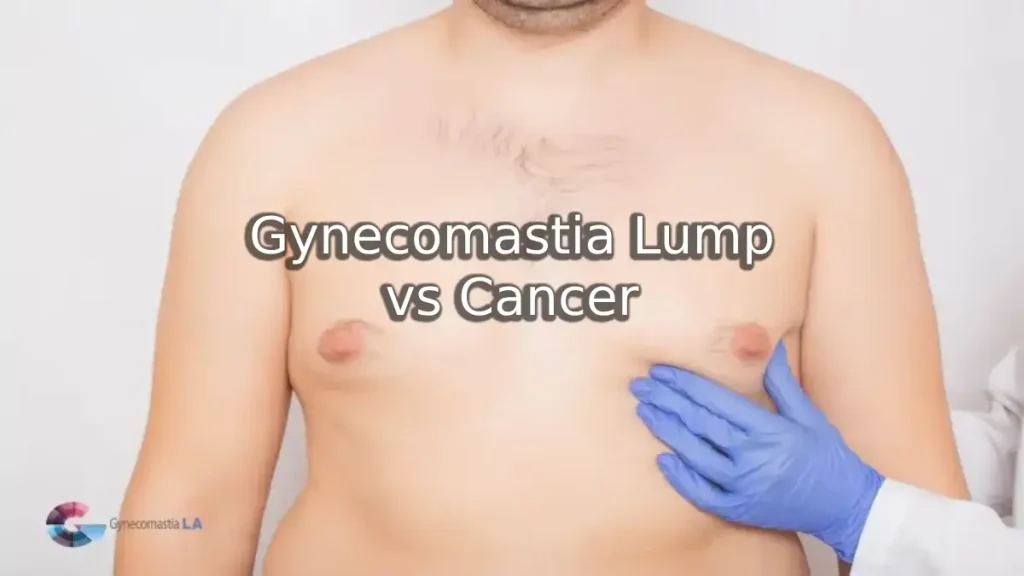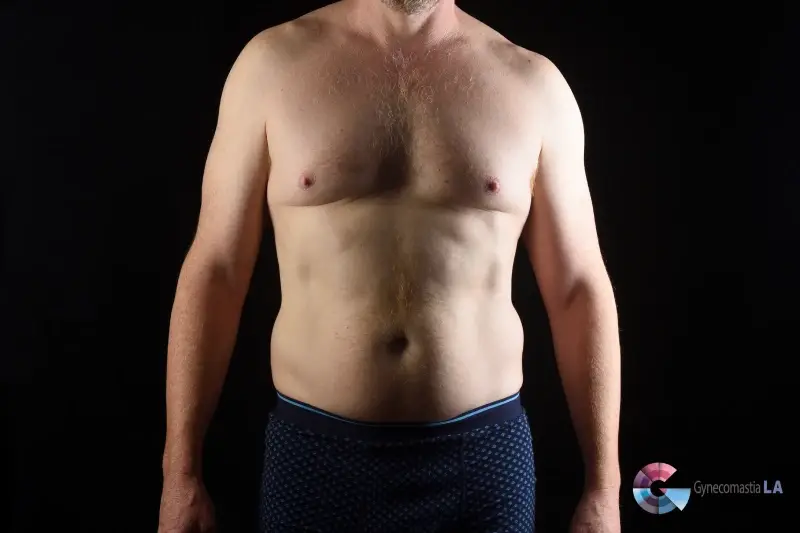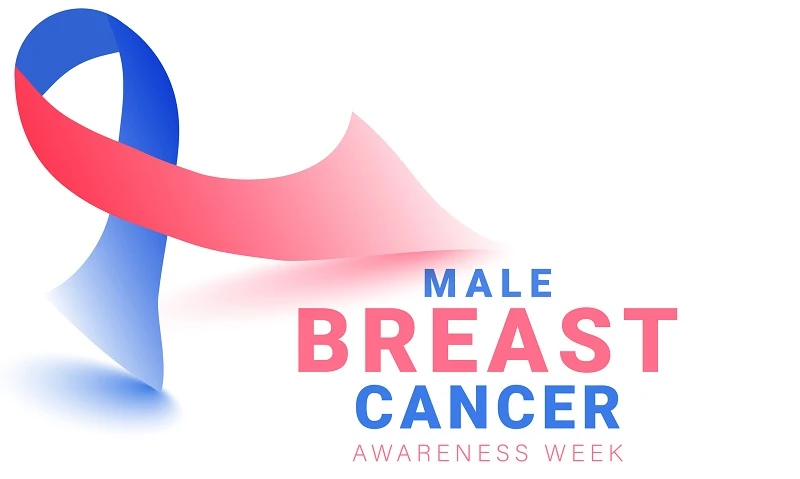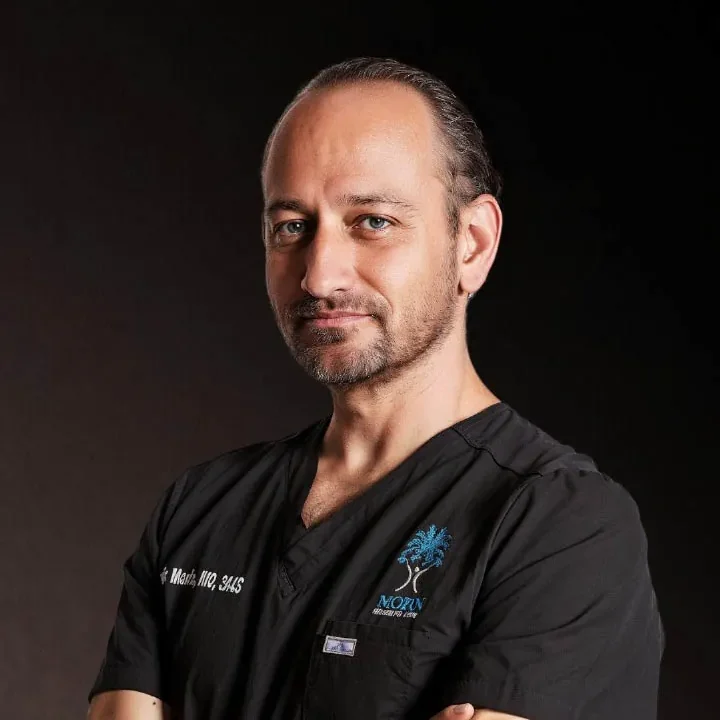Introduction to Gynecomastia Lump vs Cancer
Gynecomastia, a condition characterized by the enlargement of breast tissue in men, often stirs concern due to its visible symptoms and underlying causes. This condition, commonly caused by hormonal imbalances, affects a significant portion of the male population at various stages of life. While primarily a benign issue, its presence raises an intriguing question in the medical community: does gynecomastia increase the risk of developing breast cancer?

Table of Contents
Understanding Gynecomastia
Understanding the connection between gynecomastia and breast cancer requires a closer look at both the hormonal dynamics and the additional risk factors that come into play. Key contributors include factors like estrogen excess, low androgen levels, as well as genetic predispositions, age, and certain lifestyle choices such as obesity and alcohol consumption. Additionally, medical conditions and medications that influence hormone levels could potentially set the stage for an increased breast cancer risk.
This article aims to unravel the complexities of gynecomastia by exploring its causes, symptoms, and connection to breast cancer. Through an examination of medical studies and expert recommendations, we will shed light on the importance of vigilance, early detection, and appropriate screening for those with gynecomastia.
Gynecomastia is a common condition in males characterized by the enlargement of breast tissue due to hormonal imbalances, specifically a higher ratio of estrogen to testosterone. It can affect males at various life stages, including newborns, adolescents, and older adults, often leading to psychological issues like low self-esteem. The condition involves firm breast tissue, typically under the nipple, and can affect one or both breasts, usually measuring less than 1-1/2 inches across.
Gynecomastia differs from pseudogynecomastia, which is caused by obesity and involves fatty tissue rather than glandular tissue. Prevalence is highest during puberty, affecting up to 65% of adolescent boys, with many cases resolving as hormones stabilize. By age 17, only about 10% of boys have persistent gynecomastia. As men age, testosterone levels decline and estrogen levels may increase, leading to more cases. Though not cancerous, the condition underscores the importance of awareness and emotional support.
Hormonal Imbalances and Gynecomastia
When evaluating a gynecomastia lump vs cancer, it’s critical to understand the hormonal imbalances at the root of gynecomastia. Gynecomastia is the benign enlargement of male breast tissue, often triggered by an imbalance between estrogen and testosterone. When estrogen becomes dominant, whether due to puberty, aging, obesity, liver disease, or medications, glandular breast tissue can begin to grow, forming a noticeable lump.
Unlike breast cancer, which typically presents as a hard, irregular, and possibly painful mass, gynecomastia tends to feel rubbery or firm but is usually symmetrical and located beneath the nipple. Still, distinguishing a gynecomastia lump vs cancer requires a thorough clinical evaluation, especially in older men or when the mass is unilateral, rapidly growing, or accompanied by nipple discharge.
Low androgen levels can also contribute, as reduced testosterone allows estrogen to have a greater influence. Conditions like Klinefelter’s syndrome, chronic liver or kidney disease, and medications such as spironolactone or prostate cancer treatments may suppress androgen production, increasing the likelihood of gynecomastia.
Understanding these hormonal dynamics is essential in managing male breast enlargement and ensuring accurate diagnosis between gynecomastia lump vs cancer.
Potential Risk Factors for Breast Cancer
Understanding the risk factors for male breast cancer is crucial for early detection and prevention. Distinguishing between gynecomastia and chest fat is key to addressing male breast enlargement. While chest fat (pseudogynecomastia) results from excess adipose tissue, gynecomastia involves glandular growth due to hormonal imbalances, often triggered by aging, obesity, medications, or medical conditions like liver disease or Klinefelter syndrome. Understanding the types of gyno is essential: true gynecomastia is typically symmetrical and firm under the nipple, while pseudogynecomastia feels soft and spreads across the chest.
Though gynecomastia itself is non-cancerous, it can slightly increase the risk of male breast cancer, especially in older men or those with genetic predispositions like BRCA2 mutations. Alcohol use, anabolic steroids, and certain medications may also elevate estrogen levels, compounding the risk.
Early diagnosis and proper evaluation by a gyno surgeon like Dr. Moein in Los Angeles can help identify the root cause and recommend effective treatment, whether it’s surgical removal of glandular tissue, liposuction for fat, or further diagnostic testing for underlying conditions. If you’re concerned about gynecomastia or cancer, Dr. Moein offers expert guidance and advanced treatment options tailored to each patient.
Common Symptoms and Causes of Gynecomastia

Gynecomastia, enlarged male breast tissue, can occur at any age, but is especially common in teens and older men due to hormone imbalances. During puberty, Teen puffy nipples are a typical sign of temporary hormonal shifts. In adults, saggy man boobs may result from long-term hormonal changes, weight gain, or certain diseases, such as liver or kidney dysfunction.
Identifying gynecomastia often starts with noticing a rubbery mass beneath the nipple, usually symmetrical and tender. Unlike cancerous lumps, gynecomastia doesn’t typically present with nipple discharge or skin changes. It’s essential to understand the Different Types of Male Chest Anatomy, true gynecomastia (glandular tissue), pseudogynecomastia (fat accumulation), or mixed- to determine the appropriate gynecomastia treatment approach.
Common causes include thyroid or testicular disorders, side effects of medications, or lifestyle choices like alcohol or marijuana use. In mild cases, Gynecomastia self-care, such as weight loss, avoiding hormonal triggers, or monitoring medications, may help. For persistent or severe cases, evaluation by a specialist like Dr. Moein in Los Angeles is advised to explore medical or surgical treatment options tailored to your chest type and aesthetic goals.
Gynecomastia and Genetic Conditions
Gynecomastia, the enlargement of breast tissue in males, is primarily caused by hormonal imbalances but can be influenced by certain genetic conditions. Notable genetic disorders associated with gynecomastia include Klinefelter syndrome, where males have an extra X chromosome, leading to reduced androgen and increased estrogen levels. About 80% of individuals with Klinefelter syndrome experience gynecomastia and face a significantly higher risk of breast cancer.
Liver disease, such as cirrhosis, can also trigger gynecomastia by altering hormone levels; it enhances estrogen production while decreasing testosterone. The liver’s impaired function impacts hormonal balance, contributing to breast tissue development.
Additionally, inherited genetic mutations, especially the BRCA2 mutation, significantly increase the risk of breast cancer in men. Men with this mutation have a lifetime risk of 7-8%, unlike the 0.1% risk in those without it. Genetic counseling and testing are crucial for individuals with a family history of related cancers to make informed health decisions.
Gynecomastia and Breast Cancer Risk

Gynecomastia, characterized by breast tissue growth in men, raises some concerns about breast cancer, though the overall risk remains low. This condition often results from hormonal imbalances, particularly between testosterone and estrogen, and is more prevalent in men with Klinefelter syndrome or those exposed to radiation.
Medical studies indicate that while there is a slight link between gynecomastia and breast cancer, most cases are benign and resolve on their own. Gynecomastia typically presents as soft, even lumps, whereas male breast cancer often appears as hard, irregular lumps. Understanding these differences is crucial for accurate diagnosis and reducing anxiety. Any breast lump should always be checked by a doctor for proper evaluation.
Breast Cancer Vigilance and Screening for Men
Men often overlook breast lumps, thinking they are harmless, but vigilance is essential. Any noticeable changes in breast or nipple appearance should prompt a consultation with a healthcare provider, even if gynecomastia itself isn’t directly linked to breast cancer. While not all lumps are cancerous, getting them examined through ultrasounds or biopsies is crucial.
Early detection of breast cancer significantly improves treatment outcomes and survival rates, yet men typically do not undergo routine screenings. Therefore, self-examination and awareness are vital, especially for those at high risk, like those with a family history or prior radiation therapy. Teaching men about breast health and encouraging them to seek medical advice for any anomalies can facilitate early diagnosis and treatment, ultimately enhancing survival chances.
Conclusion: Know the Difference – Gynecomastia Lump vs Cancer
Understanding the difference between a gynecomastia lump vs cancer is essential for men experiencing changes in their chest. While gynecomastia is typically benign and caused by hormonal imbalances, any unusual lump should be evaluated promptly to rule out malignancy. Early diagnosis not only brings peace of mind but also ensures timely and appropriate treatment.
If you’re unsure about a lump or are concerned about the appearance of your chest, expert evaluation is just a call or click away. At Moein Surgical Arts, Dr. Moein provides compassionate, confidential assessments and advanced treatment options tailored to your needs.
Have questions or ready to schedule a consultation?
📞 Call us at: 310-861-3799
📩 Or fill out our quick and secure contact form to get started today.
Your health and confidence matter—take the first step toward clarity and care.
4o

Dr.Babak Moeinolmolki
LA Cosmetic Surgeon Dr. Moein is board-certified by the American Board of General Surgery.

